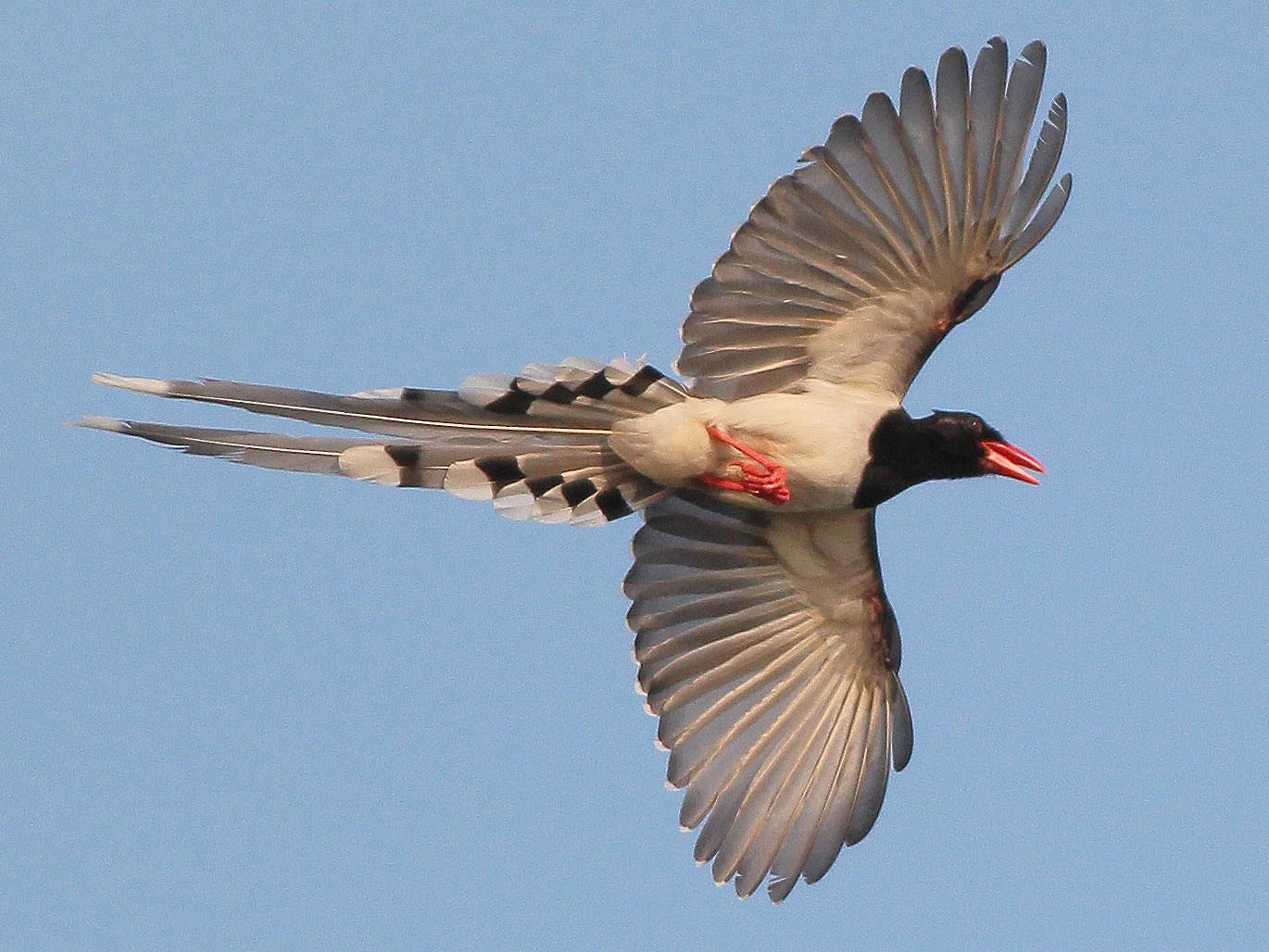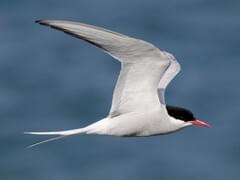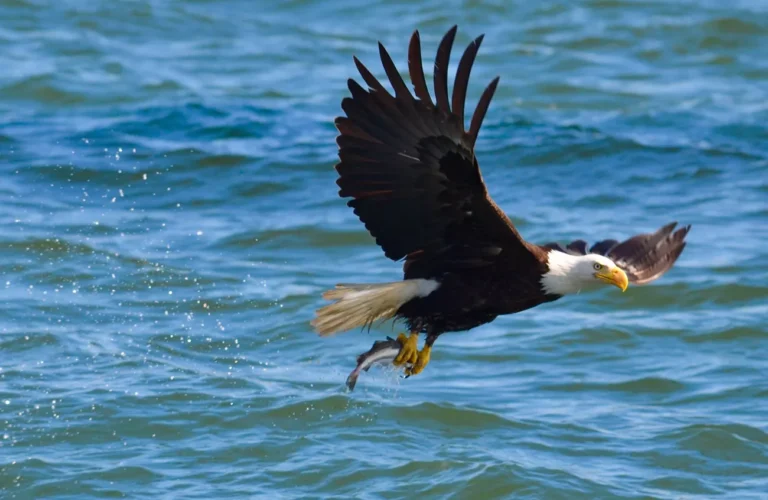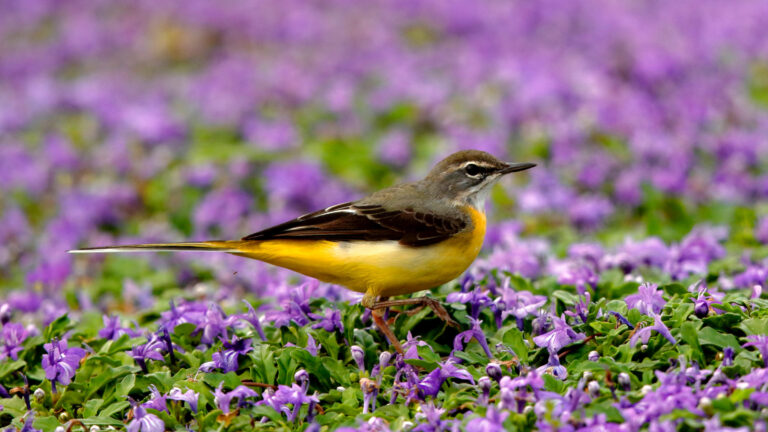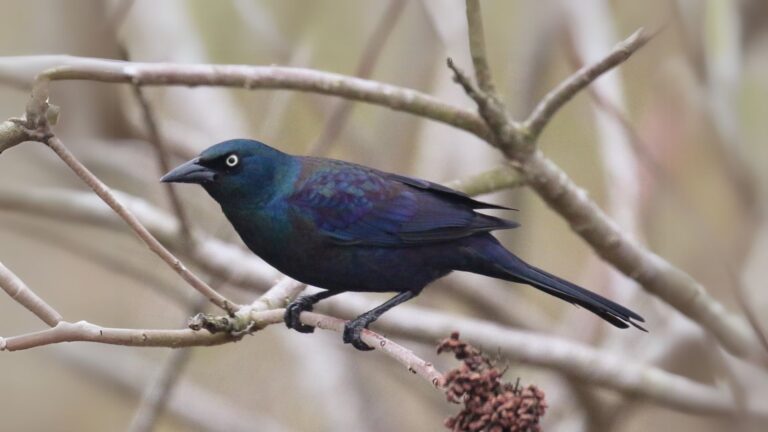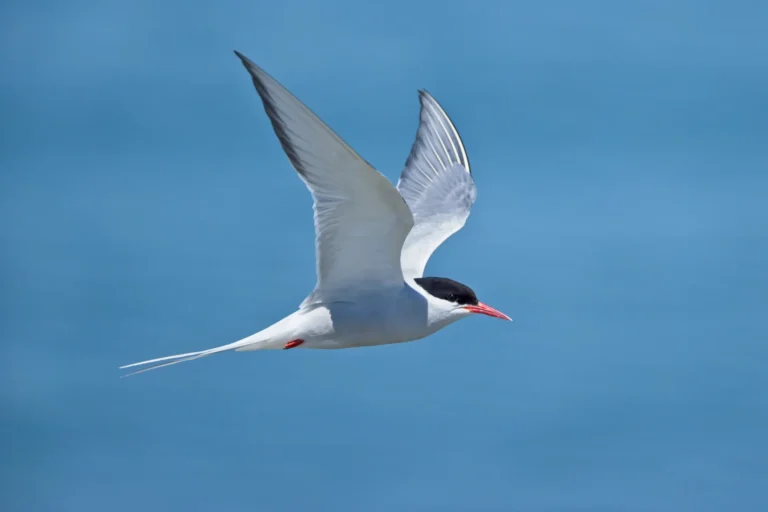What Does a Bird Do for the Environment: Surprising Ways Birds Benefit Nature
What do birds do for the environment? They play a bunch of important roles in nature that keep the environment ticking. They help control pests, spread seeds, and even pollinate flowers and so much more.
Because birds react quickly to changes around them, scientists often use shifts in bird populations to track environmental health. This lets people monitor pollution, habitat loss, and climate change without waiting for bigger disasters.
Birds impact food webs and shape their habitats in subtle and not-so-subtle ways. Their movements—like migrating across regions—connect different ecosystems and spread nutrients around.
By watching how birds interact with their environment, ornithologists get a clearer picture of how small changes ripple out to other animals and plants. Learning what birds do for the earth nudges people to make smarter choices for conservation and protect biodiversity for the future.
Key Takeaways
- Birds help pollinate plants, spread seeds, and control pests.
- Changes in bird populations signal shifts in environmental health.
- Studying birds guides conservation and protects biodiversity.
How Birds Support Ecosystems
Birds fill all sorts of roles that keep natural systems healthy. They affect plants, animals, and even the land itself—sometimes in ways that surprise us.
Promoting Biodiversity
Birds boost biodiversity by helping plants reproduce and spread. Many species, like hummingbirds and sunbirds, act as pollinators, moving pollen from flower to flower so plants can make seeds.
Other birds—think thrushes and jays—are expert seed dispersers. They eat fruits and berries, then drop seeds in new spots, sometimes far from where they started.
This seed-spreading lets plants colonize different areas and increases genetic diversity. More diversity means ecosystems can handle disease, pests, and weird weather better.
Some birds even create or change habitats. Woodpeckers make holes in trees that later become homes for other critters. By shaping the landscape like this, birds open up more spots for other species to survive.
A review of the ecological role and ecosystem services of birds highlights just how important they are for biodiversity in all sorts of habitats.
Strengthening Food Chains
Birds show up at all levels of the food chain. Hawks and owls, for example, are predators that keep rodents and insects from getting out of control.
Insect-eating birds help control pests in fields, forests, and even cities. By gobbling up huge numbers of bugs, they reduce how much we need to rely on chemical pesticides.
Birds also serve as prey for bigger predators like mammals and reptiles. Their nests and eggs are important food sources, especially in certain seasons.
Because birds connect so many parts of the food web, they help move energy through ecosystems and support a bunch of other species.
Maintaining Balance in Nature
Birds keep natural systems balanced by taking on multiple jobs. Vultures, for example, act as scavengers and clean up animal remains, which keeps the environment cleaner and lowers disease risks.
Without these birds, carcasses would hang around much longer, messing with soil and water quality. Migratory species like geese and swallows move between habitats, carrying nutrients from one place to another and linking different ecosystems.
Birds often signal changes in the environment before other species do. When they respond to habitat loss or pollution, scientists get a heads-up about broader ecosystem problems.
Research on the ecosystem services provided by birds shows how these daily activities help keep things balanced.
Birds as Pollinators and Seed Dispersers
Birds play a huge part in helping plants reproduce and spread. Their actions support healthy ecosystems and keep food webs running in all kinds of places.
Facilitating Pollination
Many birds act as pollinators while they sip nectar from flowers. Hummingbirds and sunbirds use their long bills and tongues to reach nectar, picking up pollen as they go.
As they bounce from flower to flower, pollen sticks to their feathers and beaks. This transfers pollen between plants, letting fertilization and seed production happen.
Bird pollination matters most for plants that insects can’t reach easily. Some tropical and desert flowers are shaped so only birds can get at the nectar, making these birds essential for those plants’ survival.
In some places, losing bird populations has led to lower pollination rates, leaving ecosystems more vulnerable. Researchers highlight the role of birds in pollination interactions as a key part of ecosystem health.
Enabling Seed Dispersal
Birds also spread seeds around. Many species eat fruits and berries, then drop seeds in their droppings as they travel. This helps plants grow in new places and keeps genetic diversity high.
Without birds, some forests and grasslands would bounce back much more slowly after environmental changes. Certain birds are major seed dispersers in both temperate and tropical regions.
Over one-third of bird species eat fruit and disperse seeds. This keeps plant diversity up and helps restore damaged landscapes.
Birds also help rare or endangered plants that rely mostly on avian visitors for seed dispersal. Studies show that the presence of birds as seed dispersers supports ecosystem function and resilience.
Birds and Pest Control
Birds help limit pest populations in wild places and on farmland. Many species hunt insects and small animals, making a dent in pest numbers and lowering the need for chemical sprays.
Natural Predators of Insects
Birds eat a ton of insects that can harm plants and crops. Songbirds like warblers and chickadees snack on caterpillars, beetles, and grasshoppers.
Woodpeckers dig for bugs hiding in tree bark, helping protect forests from infestations. Swallows and swifts catch flying insects mid-air, while some game birds and wrens hunt bugs and larvae on the ground.
This steady bug-eating keeps insect numbers down and reduces damage to plants, forests, and gardens. Birds of prey, or raptors, like hawks and owls, go after rodents too, adding another layer of pest control.
Studies show bird predation can limit outbreaks of harmful pests, as detailed in reviews of avian predators in agriculture.
Supporting Agricultural Health
Healthy bird populations in farming areas help crops by controlling pests. Barn owls and kestrels, for example, hunt mice and voles in grain fields and orchards, keeping rodent numbers low without poison.
Fruit growers sometimes worry about birds eating fruit, but research shows birds usually do more good than harm. Fields with birds tend to have fewer pests and less leaf damage than areas where birds are kept out.
A global study found that birds provide crop protection services and help keep agricultural systems in balance.
Bird-friendly practices—like planting hedges or leaving patches of trees—make farms better habitats for insect-eating birds and raptors. This can boost yields and cut back on synthetic pesticides.
Birds in Food Webs
Birds connect a lot of living things in nature because they play big roles in the food web. They eat other animals and also become food for many predators.
Birds as Prey
Plenty of animals depend on birds for food. Songbirds, waterfowl, and nestlings get eaten by predators like hawks, foxes, snakes, and mammals.
This relationship helps control the populations of both birds and their predators. For example, if bird numbers drop, predators might struggle. If birds thrive, predator numbers might rise too.
Eggs and chicks are especially important protein sources for animals in ecosystems. Raccoons, snakes, and larger predators target this stage in the bird’s life.
In coastal habitats, birds support food webs by connecting land and water environments, moving energy through different layers of the food chain.
By being part of predators’ diets, birds help transfer nutrients and energy, keeping the food web balanced.
Birds as Consumers
Birds influence the food chain by eating insects, seeds, fruits, fish, and sometimes small mammals. Insects like caterpillars and beetles make up a big chunk of many birds’ diets.
By eating loads of insects, birds help control pests and protect plants. This top-down effect, called a trophic cascade, means birds as predators can benefit plants by reducing pest numbers.
Birds like ducks, herons, and shorebirds link freshwater, coastal, and land food webs by feeding in different environments. As they move and eat, they transport energy and nutrients, supporting healthy ecosystems and keeping populations in check.
Bird Migration and Environmental Health
Migratory birds connect distant habitats and reveal a lot about environmental health. Their journeys and population shifts can reflect changes caused by humans and climate change.
Long-Distance Migratory Routes
Migratory birds travel thousands of miles every year between breeding and wintering grounds. These long trips move nutrients—like seeds and invertebrates—across continents, supporting plant growth and animal diversity in many spots.
Birds follow specific routes, called flyways, where they stop to rest and feed. The health of these stopover sites matters a lot, since birds depend on them to survive the trip.
If a habitat along the route gets damaged, it can hurt many bird species. Climate change is now shifting migration timing and the places birds can stop.
Birds rely on cues like temperature and daylight, so disruptions from urban growth or pollution can make migrations tougher. Read more about broad-scale environmental impacts on bird migration.
Indicators of Environmental Change
Birds are sensitive to their surroundings, making them early indicators of environmental change. Shifts in their populations or migration patterns can point to problems like pollution, habitat loss, or climate change.
Tracking migratory species helps scientists see how whole ecosystems are doing. For example, declining numbers of some migrants can signal trouble in specific habitats or flyways.
Rikkyo University and similar research centers use composite population trends of birds to measure environmental health, showing how wild bird indicators reflect environmental conditions.
By monitoring these birds, experts can spot environmental threats sooner and come up with solutions to protect both birds and their habitats.
Birds and Habitat Creation
Birds shape their environments in big and small ways. They help create and maintain habitats that support other creatures, especially in wetlands and forests.
Birds in Wetland Ecosystems
Wetland birds like waterfowl, herons, and cranes keep wetland habitats healthy. As they search for food, they stir up mud at the bottom of ponds and marshes, releasing nutrients and supporting aquatic plants.
Some bird species control insect and fish populations, keeping things balanced. Their droppings add important nutrients, helping plants and small aquatic animals grow.
Ducks and geese carry seeds on their feathers or in their droppings, spreading plant species and helping new growth take hold. Wetland birds often build nests in reeds and grasses, shaping the wetland’s structure and providing shelter and nesting sites for others.
For more on bird roles in habitat creation, see this overview on bird and habitat concepts.
Nesting and Habitat Structures
Bird nests aren’t just for raising chicks—they leave a mark on the landscape. Woodpeckers create holes in trees to nest and hunt for insects, and once they leave, these tree cavities often become homes for other animals.
Large bird colonies can even change the ground beneath their nests. When hundreds of birds gather, their droppings add nutrients to the soil, which can affect which plants grow nearby.
During breeding season, birds build nests from twigs, grass, feathers, and mud, gathering materials from the local area and changing the habitat. Birds often pick certain plants for nesting, which might help those plants thrive or spread.
These nest-building efforts support the larger animal community, giving other species places to live or hide. Learn more about how birds respond to changes in habitat in this study on bird community responses.
Conservation and Bird Populations
Many bird species face threats from habitat loss, pollution, and climate change. Conservation efforts can help keep their populations stable and maintain healthy environments for wildlife and people alike.
Protecting Endangered Species
Endangered birds are at risk from shrinking habitats, illegal hunting, and pollution. Preserving these species keeps genetic diversity in bird populations, making them more resilient to disease and change.
Some main ways to protect these birds include creating wildlife reserves, banning rare bird trade, and restoring lost habitats. Communities that get involved in protection efforts can help track bird numbers and spot trouble early.
Community science, like local bird counts, gives scientists valuable data. This info shows which species are declining and where urgent action is needed.
When we protect endangered birds, we support other wildlife and natural areas too.
Conservation Strategies
Good conservation strategies use research and local know-how to make plans for protecting birds. Land management, like planting native trees and removing invasive species, creates better habitats.
Legal protections—setting hunting limits or banning dangerous pesticides—reduce threats to bird populations. Keeping genetic diversity high helps birds adapt over time.
Sometimes conservation means breeding rare birds in captivity and releasing them into the wild. Regular monitoring helps groups watch for signs of recovery or new risks.
Education and outreach encourage people to care about conservation. By working with local schools and organizations, these projects raise awareness about issues that affect both birds and people.
Human-Bird Relationships
Humans and birds have shaped each other for thousands of years. Birds impact fields like agriculture and science, and people help study and protect bird species through research and community efforts.
Birds in Agriculture
Birds play a practical role in agriculture by controlling pests. Owls, hawks, and other birds of prey hunt rodents that damage crops, while crows, starlings, and sparrows eat insects like beetles and caterpillars.
This natural pest control reduces the need for chemical pesticides. Some birds, like chickens and ducks, have been domesticated for food, providing meat and eggs for people worldwide.
Farmers rely on these birds to help supply local and global food systems. In some places, birds are vital for pollination and seed spreading, supporting plant growth and biodiversity.
The presence of birds in farmlands also tells us something about environmental health. Diverse bird populations often mean a balanced ecosystem.
Studies on human–bird relationships across cultures show how farmers and rural communities depend on birds for sustainable practices.
Ornithology and Community Science
Ornithology—the study of birds—has a long history of linking scientific research with public observation. Scientists and hobbyists track bird populations to understand migration, breeding, and environmental changes.
Community science projects, like bird counts or local monitoring programs, let anyone report bird sightings. These programs collect large amounts of data, making it easier to spot trends and environmental issues.
Apps and online platforms make it simple for people to join in, even with little training. Projects in cities have led to more citizens learning about bird biology and contributing to conservation.
Ornithology and community science work together to build public awareness and support for bird protection. This teamwork strengthens our knowledge about local species, habitats, and food sources.
Environmental Threats to Birds
Birds face lots of challenges from environmental issues, causing changes in their populations and habitats. Two big threats are diseases that directly affect birds and stresses from climate shifts.
Avian Disease
Avian diseases can spread fast in dense bird groups. Illnesses like avian influenza, West Nile virus, and Newcastle disease weaken birds and sometimes cause big die-offs.
Key causes of avian disease outbreaks include:
- Closer contact between wild birds and domestic poultry
- Poor habitat quality making birds more vulnerable
- Increased movement of birds due to environmental changes
Disease can affect other species and even people. For example, West Nile virus can infect mammals, including humans. Large outbreaks disrupt ecosystems and threaten bird conservation efforts.
Efforts to reduce disease impact include monitoring bird health and improving habitat conditions. Early detection matters for limiting spread and reducing long-term damage to bird populations and the environment.
Impact of Climate Change
Climate change puts new pressures on birds—shifting weather, changing migration timing, and food availability. As temperatures rise, birds may need to move, but not all habitats are available.
Droughts, more storms, and unpredictable seasons stress birds and chicks. Some species travel farther to find food, while others struggle to breed successfully.
Timing mismatches between flowering plants, insect hatches, and birds’ needs make things harder. Studies show that climate change is already affecting bird populations and can even be used as a bio-indicator for environmental change.
Conservation efforts focus on protecting key habitats and reducing other threats to help birds adapt to a changing climate.
Adaptations and Diversity of Avian Species
Birds have evolved all sorts of features to survive in different environments. Their unique traits make them important to ecosystems worldwide.
Flight and Soaring
Birds are famous for flying. Lightweight bones, strong chest muscles, and feathers help them lift off.
Their wings come in different shapes, letting some maneuver through forests, others glide over water, and some soar high above mountains. Soaring birds, like eagles and hawks, use rising warm air currents—thermals—to save energy on long trips.
This adaptation is crucial for birds that migrate thousands of miles. Flying and soaring give birds advantages: finding food, escaping predators, and exploring huge territories.
For more on how these adaptations shape ecological diversity, this resource offers in-depth insights.
Key points:
- Lightweight skeleton
- Broad range of wing shapes
- Use of air currents for soaring
Passerines and Waterfowl
Passerines and waterfowl are two of the most diverse bird groups. Passerines, or perching birds, make up more than half of all bird species.
They have three forward toes and one back toe, making it easy to grip branches and wires. Waterfowl like ducks and swans have webbed feet for swimming and waterproof feathers, thriving in wetlands and helping control insects and spread plant seeds.
Different beak shapes, feet, and diets let both groups live in all sorts of habitats. This diversity is a big reason birds do so well in so many places.
For a deeper look, check out avian species diversity.
Comparison Table:
| Group | Adaptation | Main Habitat |
|---|---|---|
| Passerines | Perching toes | Forests, cities |
| Waterfowl | Webbed feet, waterproof feathers | Lakes, wetlands |
Breeding and Resilience
Most birds time breeding to match when food is easiest to find. Many build nests in hidden spots, lay strong-shelled eggs, and care for their young until they’re ready to fledge.
Some birds are really resilient, shifting breeding timing or locations if things change. Migratory species may travel far to reach safe breeding grounds.
These adaptive strategies help bird populations bounce back from challenges like disease or habitat loss. This ability to adjust is a big reason birds are still common in wild and urban places.
Learn more about breeding and adaptability in forest bird adaptation studies.
FAQ About Why Birds Are Important
Birds keep nature in balance by spreading seeds, pollinating plants, eating pests, and helping break down organic matter. Their activities support food webs, save crops from insects, and even bring in money through bird watching.
How do birds contribute to ecological balance?
Birds act as both predators and prey, supporting food chains. They help regulate populations of insects, rodents, and other small animals.
Changes in bird populations can signal shifts in ecosystem health, making them useful as indicators of environmental change.
What roles do birds play in maintaining human ecosystems?
Birds control pests that can damage farms, gardens, and forests. They boost local biodiversity, which supports soil quality and plant growth.
Urban parks and gardens often attract birds, connecting people with nature and promoting well-being in cities.
In what ways do birds support plant pollination and seed dispersal?
Some birds, like hummingbirds and sunbirds, pollinate flowers while feeding on nectar. Others, like finches and pigeons, eat fruits and move seeds to new locations.
This helps forests and grasslands regrow after fires or deforestation.
What is the significance of birds in controlling pest populations?
Birds keep insects, rodents, and other small creatures in check. Farms benefit from this natural pest control, which protects crops and reduces the need for chemical sprays.
How do avian species aid in the decomposition process and nutrient cycling?
Birds like vultures eat dead animals, stopping disease from spreading. By breaking down organic material, birds speed up recycling of nutrients in soils and water.
What economic benefits do birds provide to human societies?
Birds attract tourists—especially bird watchers. Farms can save money because birds cut down on pest control needs.
Healthy bird populations support recreation, education, and scientific research on ecosystems.
